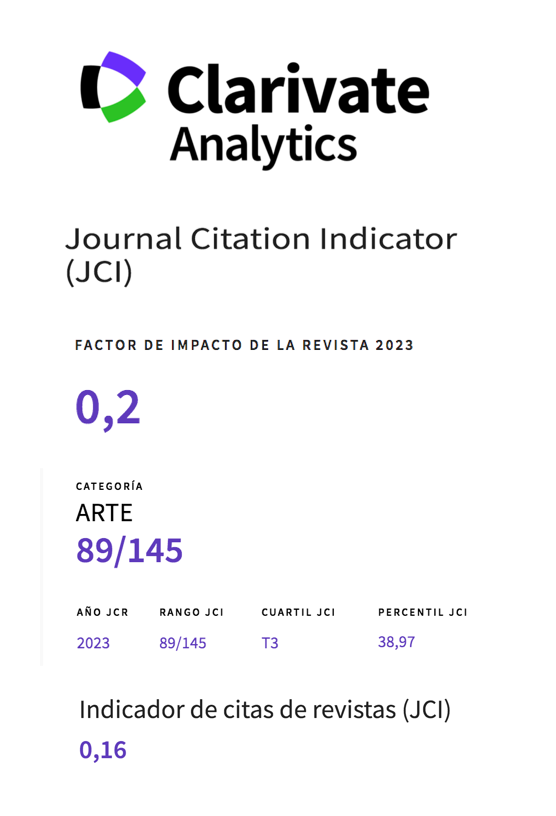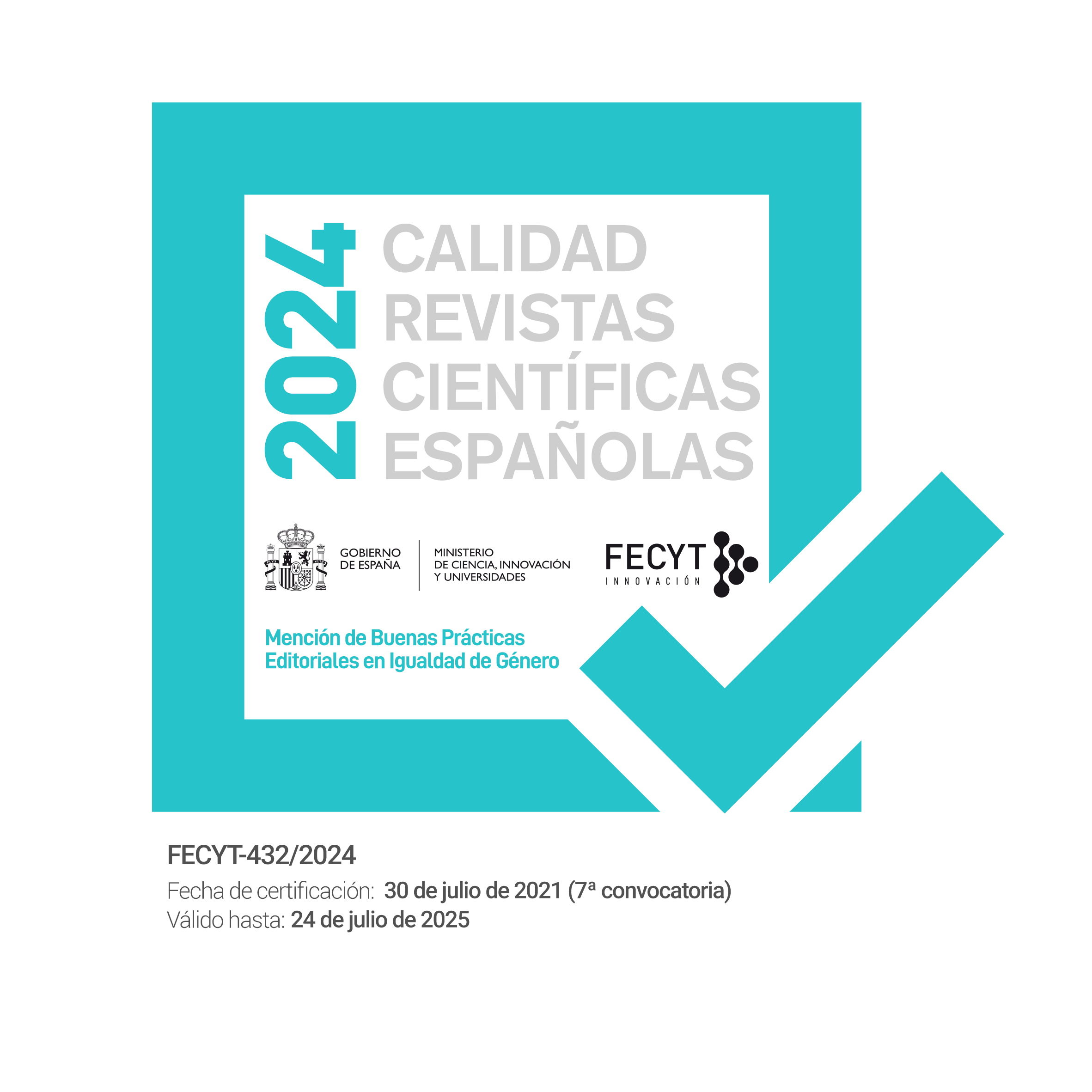¿De qué está hecha la realidad?: Simbiosis entre Arte, Ciencia y Tecnología.
Resumen
Los avances tecnológicos del siglo XX han tenido un gran impacto en el desarrollo de las ciencias y las humanidades, sin embargo, seguimos sin encontrar respuesta a la gran pregunta que ya se formularon los filósofos presocráticos: ¿De qué está hecha la realidad? ¿Cuál es su naturaleza, su esencia?Es indudable que experimentamos una revolución tecnológica que está transformando, e incluso parece ser que extendiendo, nuestra percepción de la realidad. Esta transformación, que se manifiesta a niveles microscópicos y macroscópicos, pretende ampliar nuestros conocimientos del universo y del ser humano generando nuevos modelos de representación que revisan los conceptos estrictamente mecánicos y deterministas de la realidad y ponen en duda el conocimiento absoluto. En este artículo exploramos la participación del artista en la creación de dichos modelos y la importancia de la investigación interdisciplinar en el arte, específicamente en el arte interactivo y la Realidad Virtual, y proponemos la simbiogénesis como modelo de investigación.
Descargas
-
Resumen1207
-
PDF596
Citas
Adorno, T.W. (2002) Aesthetic Theory. London: Continuum International Publishing Group.
Ball, P. (2013) Neuroaesthetics is killing your Soul. Can Brain Scans Ever Tell us Why we Like Art?. Nature News, March 22.
Cruz-Neira, C., Sandin, D., DeFanti, T., Kenyon, R. y Hart, J. (1992) The CAVE®: Audio Visual Experience Automatic Virtual Environment. Communications of the ACM.
Flake, G.W. (1998) The Computational Beauty of Nature: Computer Explorations of Fractals, Chaos, Complex Systems and Adaptation. MIT Press.
Krueger, W. y Froehlich, B. (1994) The Responsive Workbench. IEEE Comput. Graph. Appl. 14, 3.
Hegel, G.W.F. (1975) Aesthetics: Lectures on Fine Art. Oxford Clarendon Press.
Holtzman, S. (1995) Digital Mantras, The Languages of Abstract and Virtual Worlds. London, The MIT Press.
Kaufman, S. (1995) At Home in The Universe: the Search for Laws of Self-organization and Complexity. Oxford University Press.
Kawabata, H. and Zeki, S. (2004) Neural correlates of beauty. Journal of Neurophysiology, 91: 1699-1705.
Lorenz, E. (1993) The Essence of Chaos. University of Washington Press.
Malina, F.R. (1989) Computer Art in the Context of the Journal Leonardo, ACM SIGGRAPH. Leonardo supplemental issue.
Margulis, L. (1999) Symbiotic Planet: A New Look At Evolution. Basic Books.
Maturana, H. y Varela, F. (2003) El Árbol del Conocimiento, Las Bases Biológicas del Entendimiento Humano. Editorial Universitaria con Editorial Lumen.
McLuhan, M. (1996) Comprender los medios de comunicación. Las Extensiones del Ser Humano. Ediciones Paidós.
Nabokov, V. (1974) Look at the Harlequins. McGraw-Hill.
Popper, K. (1997) El cuerpo y la Mente. Ediciones Paidós.
Prigogine, I. (1997) The End of Certainty, Time, Caos and the New Laws of Nature. The Free Press.
Schiller, F. (2006) The Aesthetical Essays. EBook #6798. The Project Gutenberg EBook. Recuperado el 6 de Noviembre de 2012 de www.gutenberg.net
Shlain, L. (1991) Art and Physics: Parallel Visions in Space, Time and Light.William Morrow and Company, Inc.
Simó, Á. (2005) The Art and Science of Virtual Environments: Interactive Narratives, Navigational Systems, and Display Technologies. Proceedings of the International Interdisciplinary Conference, Science and Art, Grecia.
Simó, Á. (2006) Realidad Virtual y Creación Artística. Universidade da Beira Interior, Portugal.
Sommerer, C., Mignonneau, L. y King, D. (2008) Interface Cultures, Artistic Aspect of Interaction. Transcript Verlag, Bielefeld.
Zubiri, X. (1989) Estructura Dinámica de la Realidad. Alianza editorial.
Works published in this journal are subject to the following terms:
- The Service of Publications from the University of Murcia (publishing house) keeps the published works’ copyrights, and favors and allows the reuse of these works under the license indicated in point 2.
- Works are published in the journal’s online edition under the license Creative Commons Reconocimiento-NoComercial-SinObraDerivada 3.0 España(texto legal). They can be copied, used, disseminated, transmitted and publicly exhibited, as long as: i) the author and original source of publication are cited (journal, publishing house and work’s URL); ii) they are not used for commercial purposes; iii) the existence and specifications of this license are mentioned.
3. Conditions for auto-file. It is allowed and encouraged that authors share electronically their pre-print version (the pre-reviewed version) and /or post-print version (the reviewed and accepted version) of their Works before the publication, since it promotes its circulation and dissemination. RoMEO color: green.









